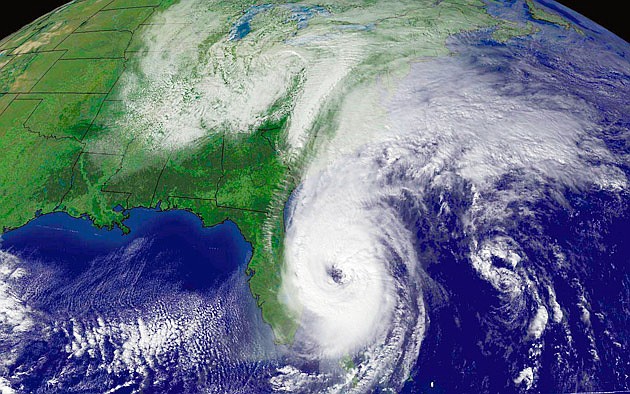Citizens Property Insurance Corporation relies on $3.6 billion from the Florida Hurricane Catastrophe Fund, coverage that may not be there when it is needed. And the Cat fund has its own claims-paying shortfalls when the big one hits. That all means mean much bigger assessments on policyholders.
The state's entry into the property insurance market may yet be Florida's Achilles heel.
Both the state insurance organization and the state's catastrophic fund face shortfalls if a major storm strikes, and patching those could prove difficult — and costly to Floridians.
As of Aug. 31, Citizens had 1,057,829 policies, an increase of 4,244 from July while the state is trying to reduce policies and its overall risk, which is heavily concentrated in Dade, Broward, Palm Beach and Monroe counties.
Of Citizens' 600,000 accounts covering wind, 187,000, or 31%, are in just those four counties. Of its 414,000 high risk accounts covering barrier islands and other risky coastal areas, 237,000 are written in the four counties — more than 57%.
Citizens has written about 362,000 policies in the eight Gulf Coast counties from Pasco to Collier. Nearly 102,000 are high risk accounts. Pinellas tops the Gulf Coast with about 101,836 policies including 15,632 in the high risk category.
While private insurers have seen seeking rate hikes, Citizens' rates have been frozen at Dec. 31, 2006.
Citizens must rely on a financial resource unique to government — the power to unilaterally assess customers and all homeowners -- to balance the books. That resource gives confidence to Sharon Binnun, chief financial officer of Citizens Property Insurance Corporation: “I think that we are well-positioned to fulfill our commitment to our policyholders.”
They better be. As Jack Nicholson, the chief operating officer of the Florida Hurricane Catastrophe Fund (the Cat fund), puts it: “The state will certainly get an earful from Citizens' policyholders if they don't get their claims paid.”
Like other Florida insurance companies, Citizens has traditional financial resources at its disposal: insurance premiums, investment income, prior years' operating surplus, and reimbursements from the Florida Hurricane Catastrophe Fund.
And Cat fund reimbursements may not be as big as Binnun hopes because the so-called temporary increase in coverage limits have not been funded, according to Rep. Bill Proctor, R-St. Augustine.
Proctor continues to be a leader in the insurance reform movement in the Florida House, pushing for a more free market approach to property insurance rates. “Citizens couldn't be in business if they didn't have assessment power,” he says.
Citizens has $9.4 billion in reinsurance coverage from the Cat fund, but about $3.6 billion can't be relied upon to be there should a major hurricane hit Tampa or Miami, for example.
As it is, a 1-in-100-year storm would cost Citizens' $22.5 billion. To pay for it, Citizens would apply its $3.9 billion surplus and its coverage from the Cat fund. If that $3.6 billion isn't there, the estimated $9.2 billion in assessments to make up the difference would then rise to $12.8 billion.
Assessment pyramid
Assessments are viewed by Citizens as a pyramid with the top representing first charging its policyholders up to 15% per account. The assessments apply to new and renewed policies for all Citizens' policyholders.
Binnun estimates this top tier of the pyramid will raise about $2.5 billion could be paid for more than one year.
When that's not enough to cover the shortfall, what's termed a “regular” 6% assessment kicks in for all non-Citizens' policyholders. Binnun estimates the regular assessment will bring in about $4 billion which gets paid by insurers within 30 days of being billed, and they in turn charge customers at renewal.
When it gets to the base of the pyramid, the “emergency” assessment, you know things are bad. This assessment may be up to 10%, and applies to all new and renewed Citizens' and non-Citizens' policyholders for high risk, personal and commercial lines — a $37.2 billion premium assessment base.
Binnun acknowledges that may be when Citizens' needs to borrow against future assessment revenue which can be paid over time, saying, “We would not do any post-event bonding unless we were in emergency assessment mode.”
Doing the math, deducting the $6.5 billion from assessments on the top two tiers of the pyramid leaves $2.7 billion to come from the bottom tier emergency assessments — arguably a manageable number assuming policyholders don't suffer too badly from multiple assessment sticker shock, drop their policies and flee north. That's something the ratings agencies will have to evaluate.
But if the unreliable $3.6 billion of reinsurance from the Cat fund doesn't materialize, Citizens' deficit under the 1-in-100-year storm scenario rises quickly to $6.3 billion. Even if emergency assessments bring in $3.7 billion, that still leaves about $2.6 billion to come up with.
Bond market questions
By itself, a $2.6 billion bond issue, or even a $6.3 billion issue, might not be too big a problem for Citizens' given it's A+ long-term bond credit rating from Standard and Poors and its A2 rating from Moody's. The Cat fund has a better AA- rating from Standard and Poors which, says Nicholson, also explains why Citizens sought reinsurance from the Cat fund rather than other costlier sources.
While bond market conditions have improved lately, and are certainly much better than a year ago, there's new uncertainty because of California's big borrowing needs to fund its death-defying deficits.
And if the Cat fund also needs to borrow an estimated $7.2 billion to plug its projected deficit for a 1-in-100-year storm, the bond market might not be so receptive. Multiple storms in a single season or consecutive years — as
Florida experienced in 2004-05 — and insurance companies going under compound the problem and add to assessments.
Already, there is a negative outlook on Florida's AA+ bond rating, meaning there's more of a likelihood of a downgrade to the rating over the next 12-18, months according to Brian Schneider, senior director of Fitch Ratings insurance group in Chicago.
According to an Oct.10 Bloomberg News story, California budget officials are predicting $38 billion in deficits over the next three fiscal years. The Bloomberg story reports that the state may offer $4 billion of debt the week of Oct. 26 to cover previous deficits on top of another $4.1 billion debt offering earlier this month. That earlier offering had to be scaled back by $400 million when yields jumped.
California's budget allows for $11 billion in general obligation bonds this year. But according to Bloomberg, the exact sale amount is still undecided. It will depend on how the markets respond.
Binnun thinks the potential cash flow problem for Citizens is manageable, partly because she argues they have enough cash and pre-event financing to address the immediate needs of hurricane victims. Claims processing and repairs don't happen overnight, so that buys time for Citizens to get its financial ducks in a row.
Nicholson is a bit more cautious. The Cat fund has a 95% probability of being able to pay claims with its available liquid resources according to an Oct. 6 report to the state Senate Banking and Insurance Committee. But he points to the 1-in-500-year flood in North Dakota as an example of very real possibilities.
Such a scenario in the form of a Category 5 hurricane plowing up Tampa Bay through St. Pete, TECO power plants, Davis Islands, the Port of Tampa and downtown Tampa would surely achieve “perfect storm” status in future history books.
Legislators envisioning what the pictures in those texts might look like have been determined to fix at least part of the problem by trying to transfer more risk back to the private market during the next five years.
And legislation now allows for more build-up of cash by, for example, allowing Citizens to increase its rate by up to 10% a year in a glide path back to actuarially sound market rates — although that is only a tiny fraction of what
Citizens' says is needed to be a sound organization.
Proctor is disillusioned by the disparity between the indicated and proposed rates, saying, “If you need that much of an increase, I don't see how you can be actuarially sound.”
But actuarially sound rates are also what the private market wants. Legislators' attempt to allow a more market-based approach to property insurance rates under the “Consumer Choice Act” last session, was stymied by Gov. Charlie Crist's — despite 86% support of legislators.
Meanwhile, State Farm has a December hearing scheduled to determine exactly how the state's Office of Insurance Regulation might allow it to exit the Florida property insurance market and unload nearly 800,000 policies. And Nationwide Mutual Insurance Co., the state's 13th largest private insurance writer, announced this month that it wants to dump 60,000 policies.
How many more departing insurance companies and dumped policies can the state handle?
That concern has Proctor and his colleagues planning to revise the “Consumer Choice Act” by opening it to all admitted property insurance companies, instead of just a limited few with larger capital bases. To discourage more policies going to Citizens, the bill would require a quote from another insurer that is 25% higher than the Citizens' quote, and would replace the 15% top of the pyramid surcharge with a 25% assessment rate.
Nicholson is also keeping his fingers crossed that a national catastrophe plan being pushed by U.S. Sen. Bill Nelson, D-Florida, will get traction. For now, the Cat fund COO remains cautious, but more upbeat than a year ago when financial markets were in turmoil.
It may not get much easier being Citizens' CFO, but Binnun is optimistic that a new report due out Oct. 20 will show a shrinking shortfall. And with those improvements, she may be able to at least look forward to greener pastures — though that may hinge on getting through one or two more hurricane seasons relatively unscathed.
If not, Citizens could prove to be Florida's Achilles heel.
Citizens' Reliance on Assessments
• Citizens' total exposure is $413 billion.
• The 1-in-100-year storm would cost $22.5 billion.
• Citizens' surplus is $3.9 billion.
• Coverage from the Florida Hurricane Catastrophe Fund is $9.4 billion.
• The remaining $9.2 billion would be covered by assessments.
Source: Citizens Property Insurance Corporation. Presentation to Florida Senate Banking and Insurance Committee, p. 17, Oct. 6, 2009.






